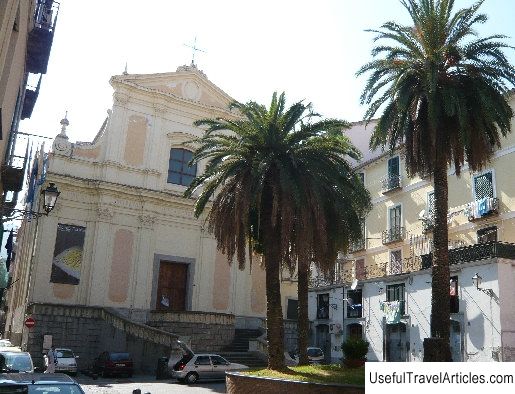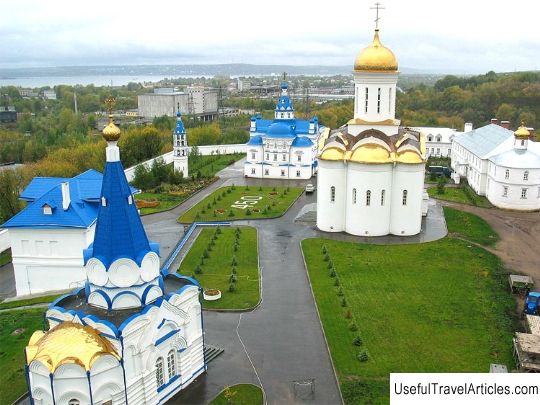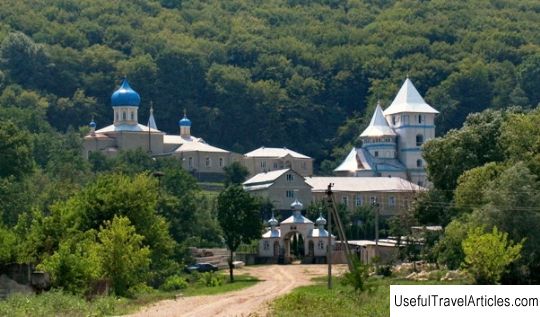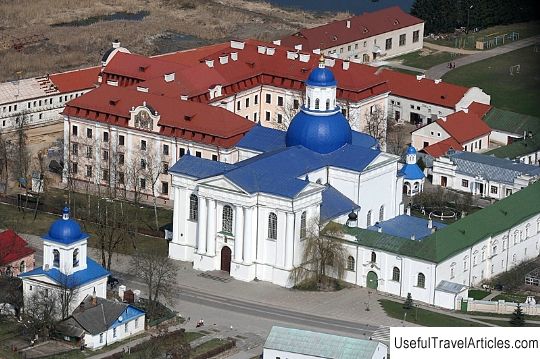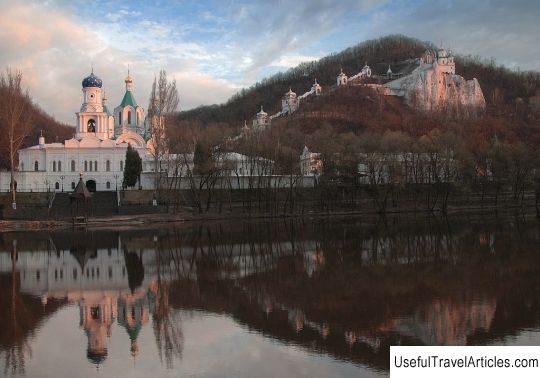Holy Dormition Monastery description and photos - Russia - Central District: Staritsa
Rating: 8,1/10 (1432 votes) 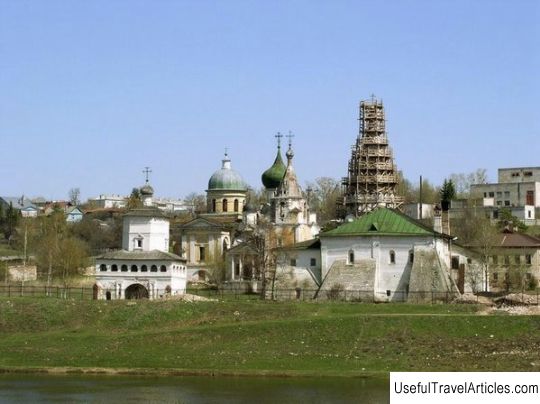
Holy Dormition Monastery description and photos - Russia - Central District: Staritsa. Detailed information about the attraction. Description, photos and a map showing the nearest significant objects. Photo and descriptionThe main attraction of Staritsa is the Holy Dormition Monastery on the river bank. According to legend, the monastery was founded in 1110 by the monks of the Kiev-Pechersk Lavra Nikandr and Tryphon. The main stone buildings were erected in the XVI-XVII centuries. The monastery is experiencing a true flourishing of construction under Prince Andrei Ioannovich Staritsky. In 1503-1537, the monumental white-stone Assumption Cathedral was erected, crowned with five domes. Despite the fact that the cathedral was quite traditional in terms of, stretched somewhat from west to east, has four rather massive internal pillars and three apses, it is an original monument of a Russian architect of the first half of the 16th century. The peculiarity of the cathedral lies in its external appearance, which is determined by a complex pyramidal composition. The architect singled out the central chapter of the temple, placing it on an octagonal pedestal, once decorated with keeled kokoshniks. He lowered the corner parts of the temple, completing them with independent chapters, also based on decorative kokoshniks. Under the cathedral there is a large basement, made of white stone, it was intended, possibly, for the burial of the prince's family and abbots. The cathedral itself is very light and airy. The son of Prince Andrei Ivanovich, Prince Vladimir Staritsky, decorated the walls inside the cathedral and made a three-tiered iconostasis. In 1570, Tsar Ivan the Terrible built the Vvedenskaya church, crowned with a high tent, with an extensive refectory chamber on two floors. At the top there is a large refectory hall, to which a warm church adjoins from the north-east. A high stone tent rises above it. Downstairs there are spacious rooms for the cookery, storerooms, and cellars. In 1802, a porch was added to the church from the north, and even later from the south side - the chamber where the monastery sacristy was located. In 1694, the church of St. John the Theologian was built over the western holy gates on the site of the burnt church of Basil of Ankir. Despite its relatively small size, the temple attracts with its monumental appearance and strict laconic silhouette. In the 18th century, the monastery was surrounded by a stone fence, a fragment of it with a round tower preserved on the southeast side. The complex includes fraternal and urgent buildings, the southern gate (1885), and the mausoleum-burial vault of Glebov-Streshnev. The high-rise dominant of the complex is a three-tiered hipped bell tower. Until 1930, there were unique chimes here, and in the first tier there was a chapel over the grave of the first Russian patriarch Job, a native of Staritsa. In 1819, the construction of the Trinity Church, executed in the forms of late classicism, was completed. For a long time, the historical and archaeological museum was located in the premises of the church. Its creators are I. Krylov and E. Klodt, the grandson of the famous sculptor.               We also recommend reading Canyon Ihlara (Ihlara Vadisi) description and photos - Turkey: Cappadocia Topic: Holy Dormition Monastery description and photos - Russia - Central District: Staritsa. |
